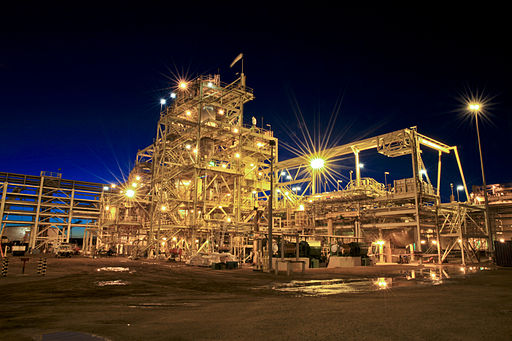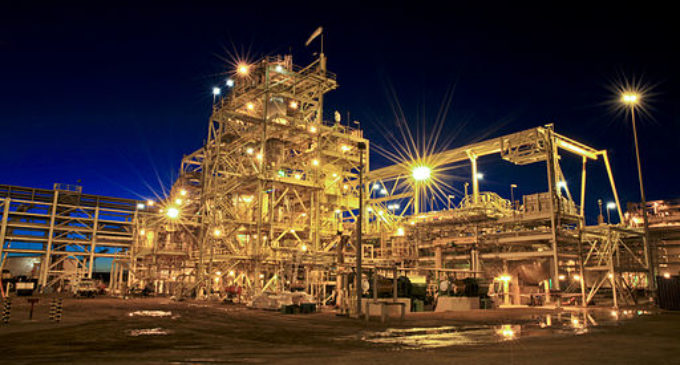 Photo by First Quantum Minerals (FQM) (FQM Image Library) [Public domain, GFDL or CC BY-SA 4.0-3.0-2.5-2.0-1.0], via Wikimedia Commons.
Photo by First Quantum Minerals (FQM) (FQM Image Library) [Public domain, GFDL or CC BY-SA 4.0-3.0-2.5-2.0-1.0], via Wikimedia Commons.Construction has begun on Queensland’s largest industrial solar project, which will see 1.3 million solar panels installed at the Sun Metals zinc refinery in North Queensland. When completed, the new power station will generate 125 megawatt of renewable energy, or about a third of the refinery’s current baseload power needs.
After touring the refinery and project site, Premier Annastacia Palaszczuk stated that this type of expansion was a prime example of the role renewable energy will play in the State’s future industrial landscape.
“Upon completion Sun Metals will be the largest single site user of renewable energy,” Ms. Palaszczuk said. “This is a unique project and is a great example of an innovative company investing in its future and North Queensland. This investment will help Sun Metals to secure its output by stabilising production costs, and will provide even more job security to the refinery’s 291 employees.”
The solar project will also create 210 jobs during construction, according to Energy Minister Mark Bailey.
“Through government-owned Powerlink, the Palaszczuk Government will facilitate connection of Sun Metal’s new power station to the grid,” Bailey said. “Use of renewable energy in this way not only demonstrates it as a reliable energy source for large-scale industry, but that Korea Zinc is committed to the people of North Queensland, to minimising carbon emissions and protecting the Great Barrier Reef.”
The project is another example of the clean energy boom occurring in Queensland under the Palaszczuk Government, Minister Assisting the Premier on North Queensland Coralee O’Rourke said.
“Since January 2016, Queensland has seen an unprecedented level of renewable energy investment activity in North Queensland with over 780 MW of large-scale projects either commencing construction or securing financial support,” O’Rourke reported. “These projects will deliver $1.6 billion of infrastructure spending to the north, while creating over 1,400 construction jobs.”
The refinery has played a significant economic role in Townsville and Queensland since it opened in 1996, according to Sun Metals Chief Executive Officer Yun Choi.
“Current refinery operations see Sun Metals produce 225,000 tons of Zinc per annum using over 900,000 megawatt-hours of electricity per year,” Choi related. “The development of the Sun Metals Corporation solar farm will see an additional 125 megawatt capacity of generation available to the National Electricity Market, underpinning the Queensland Government’s solar energy development policy, and a marked reduction in the carbon footprint of the refinery’s operations.”
The SMC Solar Farm investment of $199 million is Korea Zinc’s first step towards ensuring the long-term viability of the existing refinery and also underpinning the potential for its expansion using world-class new technology, with an investment decision due in late 2017.
“An expanded refinery would see an additional $267 million invested and is expected to support up to 827 construction jobs during peak construction and an additional 100 permanent refinery workers once operational, all within North Queensland,” Choi explained.
The refinery expansion is expected to increase broader economic activity for Townsville, with a significant increase in Townsville Port activities and uplift for local suppliers and contractors. It will also reduce water usage and environmental outputs through the use of new refining technology.
“We welcome the support of the Queensland Government and we look forward to partnering to facilitate the expansion of the refinery creating new investment, new jobs and a long-term uplift for Port of Townsville operations and the wider Townsville community,” Choi said.
The Sun Metals solar project is expected to be completed in early 2018 and fully commissioned by April 2018.

